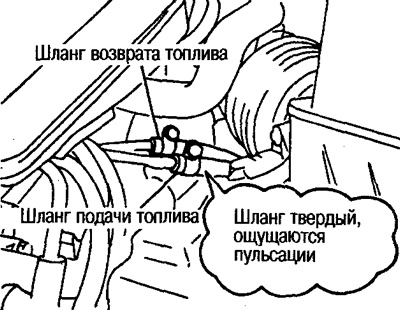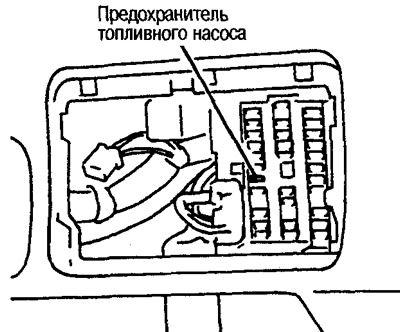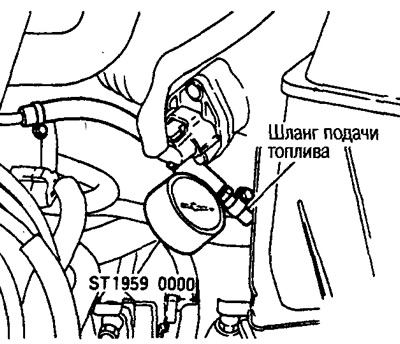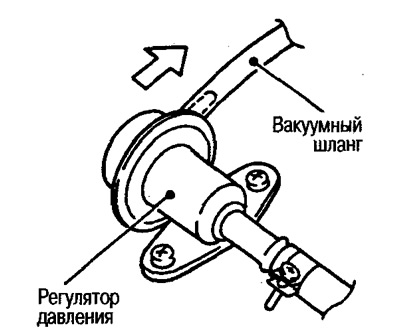Simple check
Pinch the fuel hose with your fingers, make sure that pulsations are felt during pump operation.

Checking with a fuel gauge
Relieve fuel pressure
Remove the fuel pump fuse after starting the engine.
After the engine stalls, crank it two or three times and relieve fuel pressure in the fuel line.

Fuel gauge connection
Connect fuel gauge (special tool) between the fuel supply hose and the fuel distribution line.

Note: Since fuel will spill when disconnecting the fuel hose, stock up on rags.
Replace the fuel pump fuse.
Fuel pressure check
Start the engine and check if the fuel pressure is correct.
Fuel pressure:
- At rpmx.x.: 0.25 MPa (2.5 kg/cm2)
- After disconnecting the vacuum hose from the pressure regulator: 0.29 MPa (3.0 kg/cm2)
If there is a problem starting the engine, check the fuel pressure generated by the fuel pump for 1 second. after turning the ignition key to the ON position.

Fuel pressure: For 1 sec. after turning the ignition key to the ON position: 0.29 MPa (3.0 kg/cm2)
If the fuel pressure is abnormal:
Fuel pressure unusually high:
- Defective pressure regulator
- Clogged pipe or kinked fuel return hose
Fuel pressure is unusually low:
- Defective pressure regulator
- Insufficient performance of the fuel pump
- Clogged fuel pipe
- Clogged fuel filter
Note: Also check the fuel pressure as the engine speed increases.